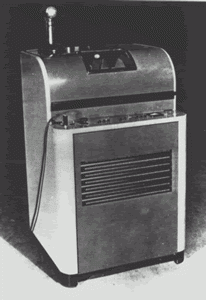The best-documented cases of individuals (rather than law enforcement officers, intelligence operatives, or private detectives) using surveillance recorders extensively come from the offices of U.S. Presidents. Although Franklin Roosevelt briefly used a special telephone recorder in the 1940s, after World War II the general availability of these machines helped them find their way into the Oval Office.

Harry Truman used a wire recorder; John F. Kennedy preferred a more full-featured dictation machine. But apparently numerous presidents in the modern era have been fairly active users of secret recorders. It was not until the press reported on the “Watergate Tapes,” however, that presidential recording became a scandal. Nixon had been for many years an avid user of office dictation machines, but he also made recordings of telephone and office conversations without knowledge of the participants. He considered them a form of record-keeping, but when they became public they proved an embarrassment.
Today, the use of audio surveillance seems like a minor issue compared to the massive use of video and internet surveillance. However, it is important to remember the deep roots that the surveillance have in our history. What is being done with technology today is not different in principle than what was done a century ago, but today it is undeniably more sophisticated.
End